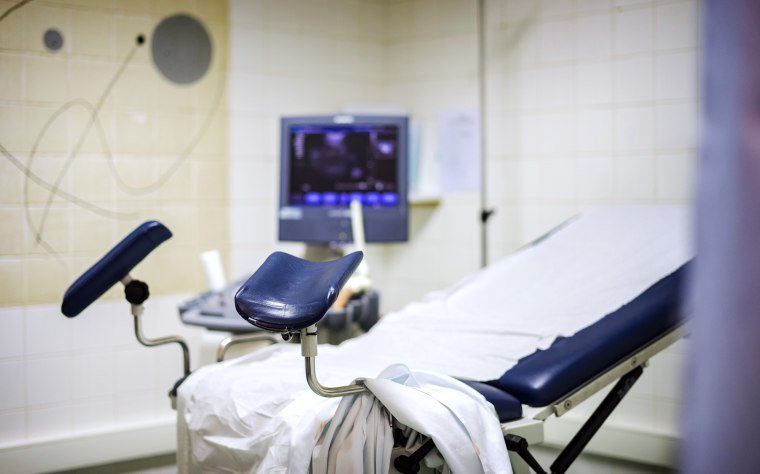Many teenage girls and young women in the United States are having invasive gynecological exams, despite recommendations against the practice, according to research published Monday.
The study, in JAMA Internal Medicine, found that a majority of those ages 15 to 20 who had a manual pelvic exam during a gynecologist visit likely didn't need one.
"There are very few indications for a bimanual pelvic examination in girls and women," said study author Dr. George Sawaya, professor of obstetrics, gynecology and reproductive sciences at the University of California, San Francisco.
Pelvic exams involve applying light pressure to a woman's abdomen while inserting two fingers into the vagina to feel for unusual growths or signs of infection.
In 2012, the American College of Obstetricians and Gynecologists changed its guidelines for pelvic exams, concluding they weren't recommended for individuals under age 21, except in certain circumstances. The exams are generally recommended for women in this age group who experience gynecological symptoms or who are pregnant. They're also recommended prior to certain procedures, such as the insertion of an intrauterine device for birth control.
In the new study, Sawaya and colleagues estimated the number of unnecessary procedures following the change in the ACOG recommendations. Their analysis was based on survey data from 2011 to 2017 from 3,410 young women between ages 15 and 20.
The research found that, in a single year, 1.4 million of the 2.6 million young women who received a manual pelvic exam may not have needed it.
Sawaya said it's unclear why so many young women appear to be undergoing unnecessary manual examinations. Most of it is likely habit from outdated OB/GYN practices. But, he said, the study authors were also concerned about reports of criminal misconduct, such as the cases against former Olympic gymnastics team doctor Larry Nassar, as well as complaints about a gynecologist at the University of Southern California.
"We want to empower girls and young women to ask, 'Why do I need this exam?'" if a gynecologist recommends it, Sawaya said.
What's more, "many young women associate the examination with fear, anxiety, embarrassment, discomfort and pain," the authors wrote in the study. "Women with a history of sexual violence may be more vulnerable to these harms."
The research also found pelvic exams tended to occur alongside Pap tests to screen for cervical cancer, another exam not recommended for women under age 21. Pap tests involve inserting a device called a speculum inside the vagina and collecting cells from the cervix that might show precancerous changes.
Major public health groups, including the American Cancer Society and ACOG, say routine cervical cancer screenings shouldn't start until after a woman's 21st birthday, regardless of sexual activity.
But among those 15 to 20 year olds surveyed, 2.2 million said they'd had a Pap test within the past year. The authors determined 1.6 million were "potentially unnecessary."
Precancerous lesions in the cervix are caused by HPV, or human papillomavirus. But the virus is so common that nearly everyone becomes infected, most often in their late teens and early 20s. In most cases, the lesions will go away on their own, experts say, and so testing for it has been found to increase the risk for false positives and unnecessary biopsies.
"Most young people who may already be exposed based on their sexual history will clear that infection and it will never amount to disease," said Dr. Catherine Cansino, associate clinical professor at the UC Davis Department of Obstetrics and Gynecology. Cansino was not involved with the new research, but was a co-author for the ACOG's clinical guidelines for pelvic examination.
The Centers for Disease Control and Prevention recommends both girls and boys receive two doses of the HPV vaccine, six months apart, before their 15th birthday. It's usually administered by the child's pediatrician.
Experts say young women may not need to see a gynecologist before age 21 unless they have symptoms such as abnormal bleeding, unusual discharge or pelvic pain, or are pregnant.
"Women should know they don't need to come in for routine testing before age 21," said Dr. Taraneh Shirazian, a gynecologist at NYU Langone Health who was not involved with the new research. "If they want contraception, they probably should come in for a discussion, but they don't need an exam for that," she added.
Cansino said it's important for a woman to build trust with her physician, and that the first visit with a gynecologist is a good time to talk through what to expect during future appointments, including when physical exams are — and are not — needed.
"Gynecologists can provide a lot of information to young women that has nothing to do with hands-on exams," Sawaya said.
"That probably will ease a lot of anxiety about a first visit with a gynecologist, to know you don't necessarily need to get an exam."
Follow NBC HEALTH on Twitter & Facebook.



